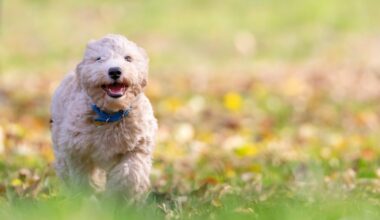Canine Uterine Anatomy and Its Role in Embryonic Development
The canine uterus plays an essential role in the reproductive anatomy of female dogs, significantly influencing embryonic development. The uterine structure consists of two horns, each extending from the body of the uterus, providing a conducive environment for gestation. This unique arrangement allows for multiple embryos to develop simultaneously, catering to larger litters. The endometrium, rich in blood vessels, secretes vital nutrients while maintaining suitable conditions for embryo implantation. Typical gestation in dogs lasts approximately 63 days, during which the uterine architecture supports the growing fetuses. Hormonal influences, primarily from progesterone, maintain uterine quiescence, preventing premature contractions during this critical phase. The interaction between the developing embryos and the uterine tissue is crucial, as it fosters proper vascularization and nutrient exchange. If abnormalities occur in the uterine anatomy, they can jeopardize the pregnancy. Understanding the specifics of canine uterine anatomy can help dog breeders and veterinarians manage reproductive health effectively. Awareness of developmental milestones allows for timely interventions, maximizing the chances of successful whelping, ensuring the health of both dam and puppies.
Central to successful reproduction in dogs is the uterine anatomy, including its hormonal responsiveness. The cycle of canine reproduction consists of various stages, from proestrus to estrus, and subsequent physiological changes are paramount. The estrous cycle involves intricate hormonal regulation, which culminates in ovulation and affects uterine readiness for implantation. Changes in the endometrium and myometrium thickness prime the uterus for potential conception. Post-ovulation, progesterone levels surge, reinforcing the uterine lining. If fertilization takes place, the zygote begins its journey toward the uterus. The two uterine horns expand during this period, accommodating developing embryos. Additional factors such as the mother’s nutrition and overall health influence uterine condition and its capacity for nurturing embryos. Breeders should monitor the reproductive health of their breeding females closely, ensuring they receive proper veterinary care. Additionally, proper timing and understanding of signs of heat and pregnancy can profoundly impact the success rates of breeding efforts. Evaluation through ultrasound or hormonal tests can also provide valuable insight into the reproductive state of the dam.
Embryonic Development in the Uterus
Once fertilization occurs within the fallopian tubes, the embryo travels to the uterus, with the timing and uterine environment being critical for successful implantation. The embryos, now called blastocysts, embed themselves into the enriched endometrium about seven to ten days post-fertilization. The uterine lining’s blood vessels support this process, furnishing nutrients essential for growth and development. The implantation process triggers additional hormonal signals that stimulate further development within the uterine environment. As the pregnancy progresses, the development of placental structures facilitates nutrient transfer between the mother and the growing puppies. This dynamic relationship exemplifies the uterus’s role as more than just a vessel; it actively participates in sustaining life. By around four weeks, significant organ systems start developing, showcasing the critical impact the uterine anatomy has. Malformations or deficiencies in the uterine environment can hinder these critical stages, leading to developmental abnormalities. Therefore, maintaining canine uterine health remains vital to ensuring successful gestation and healthy pups. Interventions for optimal reproductive outcomes can enhance litter size and puppy vitality.
Understanding factors influencing canine reproductive health is vital for efficient breeding programs. Environmental stressors can adversely affect uterine anatomy and function, influencing hormonal balance as well. Stress factors might include inadequate nutrition, exposure to toxins, and overall health conditions. Breeders often overlook the impact of stress, which can lead to reproductive failures and decreased litter viability. Furthermore, certain breeds are prone to specific anatomical issues that can affect their reproductive success. For instance, some brachycephalic breeds may have narrower pelvic canals, complicating pregnancy and whelping. Effective monitoring techniques, including veterinary check-ups during gestation and development phases, help detect potential complications early. Using advanced imaging techniques like ultrasound can allow for timely assessments of the uterine condition and fetal health. Engaging in education about reproductive physiology can also empower breeders to provide better care to their dams. Knowledge on optimal breeding times and health assessments establishes a foundation for high-quality breeding practices. This management improves the chances of successful mating and contributes to healthier litters, ultimately promoting responsible breeding standards.
Postpartum Uterine Anatomy Changes
The postpartum phase is crucial for the canine reproductive cycle, as the uterus undergoes significant transformations post-whelping. After delivering puppies, the uterine muscles contract to expel remaining placental tissues, facilitating uterine health and recovery. This process is important to prevent infections such as metritis, which can severely affect the dam’s health. Within days of whelping, the uterine size begins to decrease back to its pre-pregnant state. The endometrial lining regenerates quickly amidst hormonal changes. Factors such as proper nutrition support uterine recovery and lactation, enhancing overall health for the dam and her puppies. Monitoring for signs of complications during this period, such as abnormal discharge or fever, is essential, as these can signify health issues. Moreover, proper postnatal care includes observing the dam’s behavior, ensuring she can nurture her pups effectively. Adequate socialization and exposure are also vital for the puppies’ development. Understanding the postpartum changes in uterine anatomy can significantly influence breeding practices, contributing to responsible dog breeding and animal welfare.
In summary, canine uterine anatomy plays a pivotal role in successful embryonic development and overall reproductive health. From understanding the structural components of the uterus to recognizing the importance of hormonal regulation, both breeders and veterinarians gain valuable insights into canine reproduction. Specific anatomical characteristics of the uterus allow for multiple embryos to thrive, demonstrating the adaptability required for gestation. Close monitoring during both pregnancy and postpartum stages mitigates risks and promotes better outcomes for both the dam and her puppies. As reproductive technologies continue to advance, further research and education surrounding canine reproductive systems will likely improve breeding methodologies, ensuring healthier litters while simultaneously advocating for animal welfare. Knowledge provides the necessary foundation for enhancing breeding practices. Breeders who prioritize health, care, and education surrounding canine reproductive anatomy will undoubtedly see improvements in their breeding programs. This holistic approach fosters better practices and emphasizes the profound connection between anatomy, health, and successful reproduction in canines, supporting both breeders and the welfare of the animals involved.
Conclusion
The comprehensive understanding of canine uterine anatomy is essential in ensuring successful canine reproduction. Through this knowledge, breeders and veterinarians can navigate the complexities of reproductive health. Strategies like recognizing estrous cycles, understanding embryonic development, and facilitating optimal postpartum care contribute to improved outcomes. An informed approach enhances the health and well-being of both dams and their puppies. By focusing on nutrition, stress management, and timely medical interventions, effective canine breeding practices emerge. The importance of robust uterine health cannot be overstated, as it lays the foundation for healthy pregnancies. As reproductive science progresses, ongoing education in this field will become increasingly vital for stakeholders. Increased awareness among breeders will lead to informed decisions, which foster better animal welfare. In a world where responsible breeding is essential, this understanding bridges the gap between canine health and the joy of welcoming new life. Striving for excellence in breeding should always be prioritized, leading to healthier breeds and enhanced dog ownership experiences for future generations.
In conclusion, canine uterine anatomy is remarkable and essential in supporting life during gestation. Each intricacy of this system contributes to the successful development and nurturing of embryos, facilitating their transition from fertilization to birth. With the growing emphasis on responsible breeding, fostering education surrounding these anatomical elements becomes crucial. This knowledge equips breeders and pet owners alike with the necessary tools to ensure animal health and welfare throughout the reproductive process. A keen understanding of these concepts aids in properly managing the breeding program, which ultimately leads to better outcomes for both canine mothers and their puppies. Investing time and resources in learning about canine reproductive systems and uterine anatomy can yield exciting advancements in breeding methods. The canine reproductive anatomy’s complexities are as intriguing as they are essential. By focusing on enhancing these practices, we can foster a deeper appreciation for the intricacies of canine reproduction. It indirectly contributes to the broader effort of promoting responsible canine ownership and changing societal perceptions around breeding dogs.


